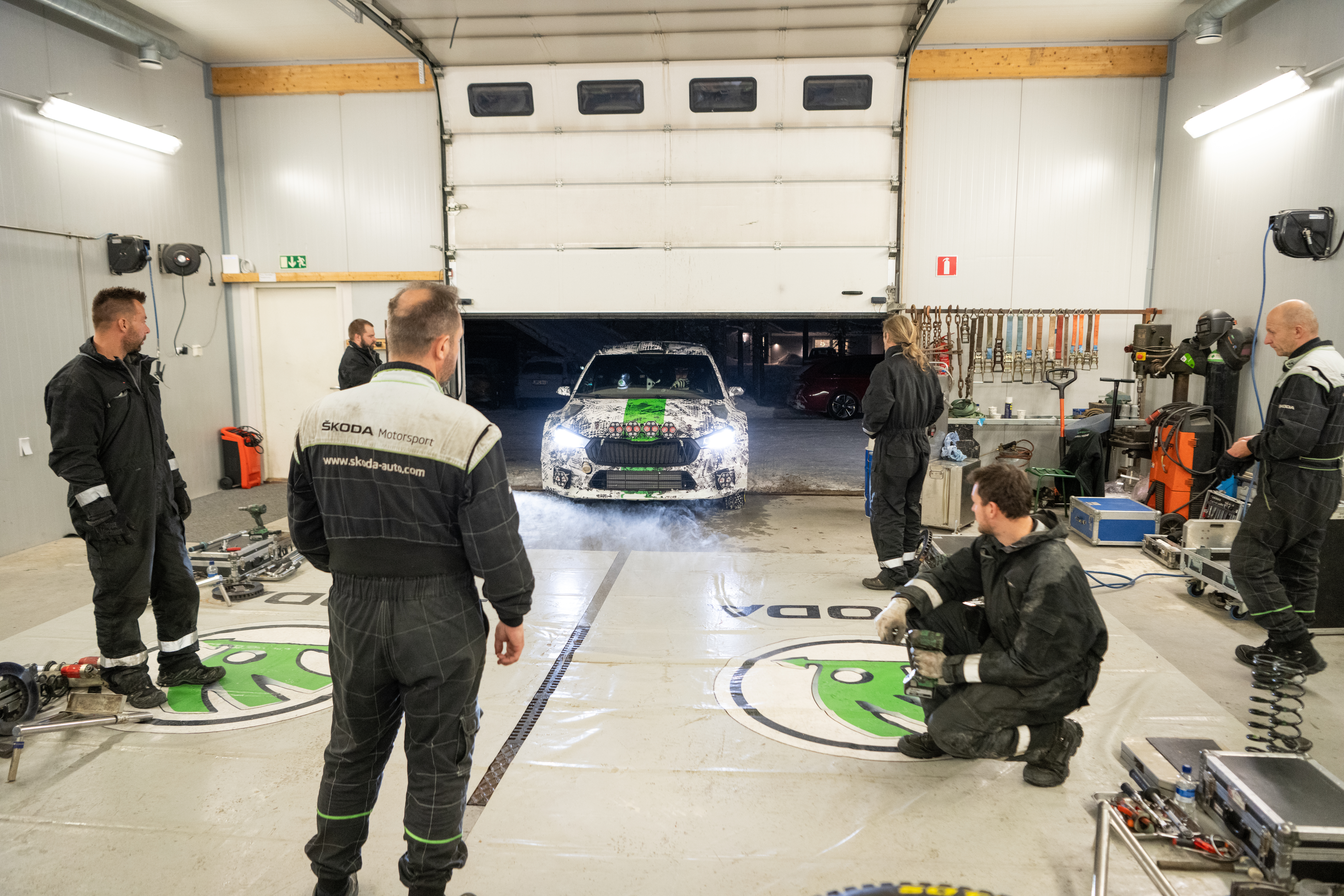What does a standard test day look like?
We start by setting everything up so we’re ready to go at 9 am. Before that, the crew needs to try out the cockpit of the car and do some runs to familiarise themselves with the track. The engineers will set up photocells on the track for measuring times. We usually test until 6 pm. We manage 10-15 runs in a day, with servicing in between to change parts or car setups. After the last run, the engineers and crew do an analysis of the day and the mechanics do an evening service, checking and adjusting the car for the next day. The length of the evening services can vary. Sometimes it’s done in two hours, other times we work past midnight.

What surfaces have you tested the new car on?
We try to test the new car on as many surfaces as possible so there are no surprises for the crews when they start racing proper. We’ve tested on smooth and bumpy asphalt, high-grip and slippery asphalt, in the dry and in the wet. For gravel it’s similar: there we started on sandier surfaces and moved on to stony gravel. We’ve tested the car on slow and fast tracks, and now we’re in Finland on snow and ice.
At what stage is the testing of the new car and what are you focusing on now?
We are slightly past the halfway point. The first thing we checked was that the car was reliable enough. Now we are coming to the end of the phase where we compare various technical solutions and slowly entering the phase when the technical specifications have been finalised and we start working on the setup of the car.

Are you satisfied with the way the winter testing went in Finland?
Yes, we are. First, we had good conditions, and second, we were able to put in lots of kilometres without any major technical problems, which allowed us to get everything we needed done.
In your eyes, what are the main differences between testing racing cars and regular production cars?
Our situation is a bit simpler in that we have one specification for the car – we don’t have to test different engines and gearboxes and or different loads on the car. We also don’t have to deal with crash tests, for example, unlike mass-produced cars. We test with fewer prototypes. On the other hand, we constantly have to disassemble and reassemble our prototypes, we have much less time for testing, and our car has to meet the strict homologation, safety and technical regulations issued by the FIA.

























